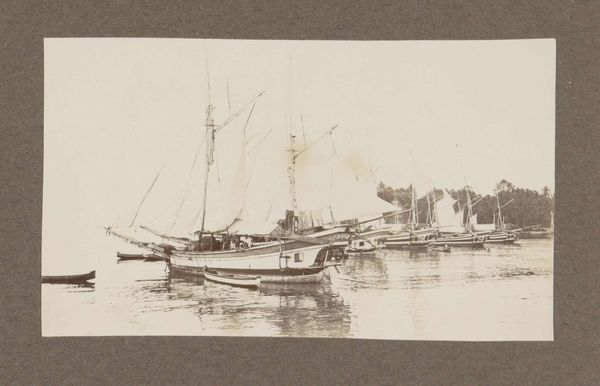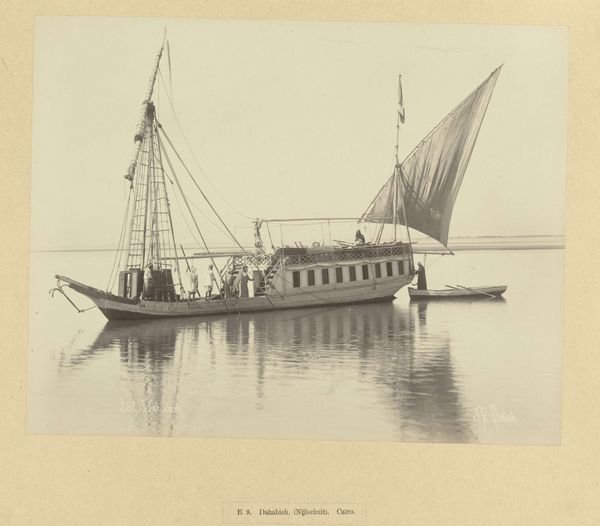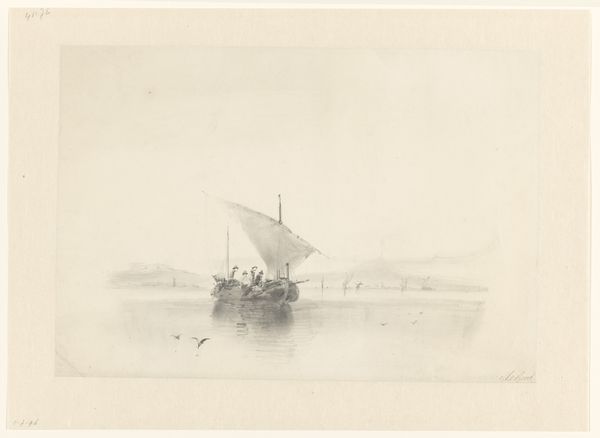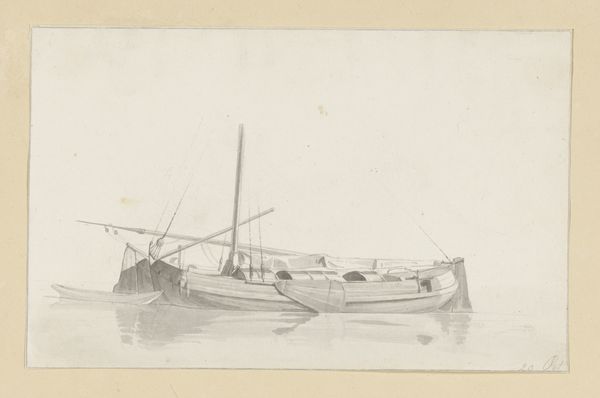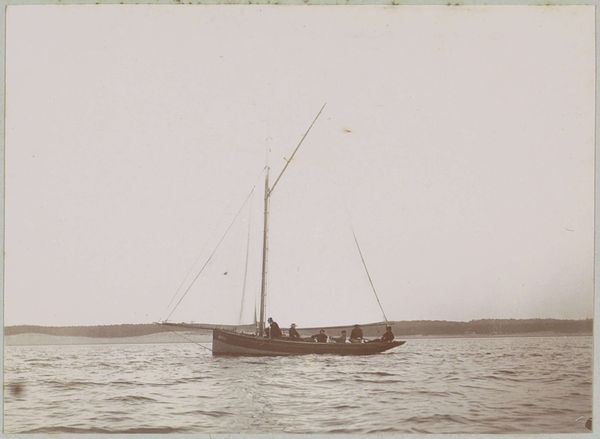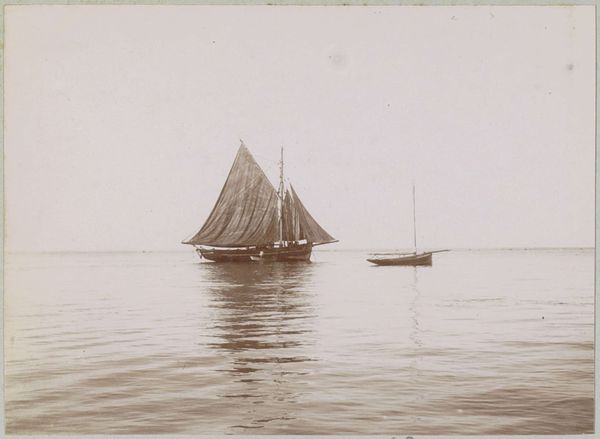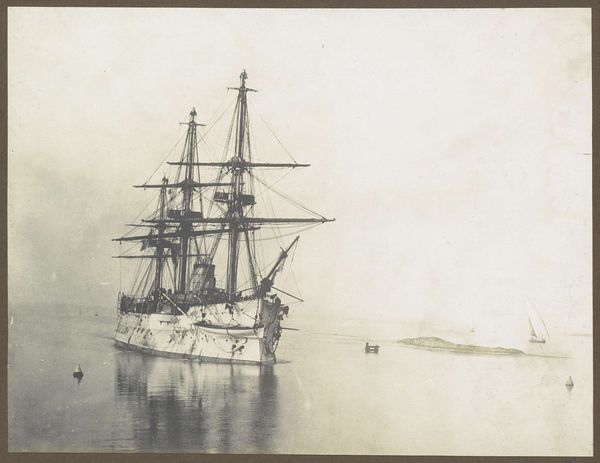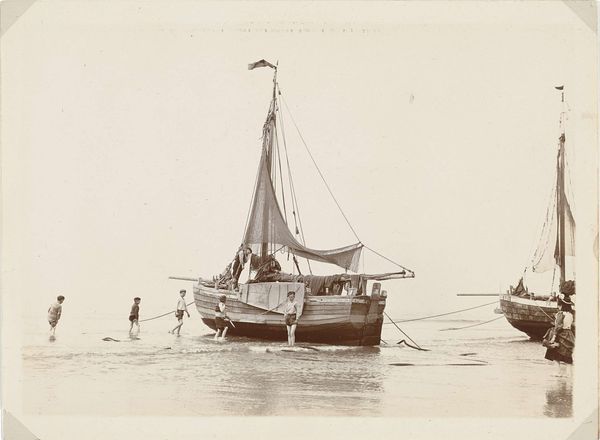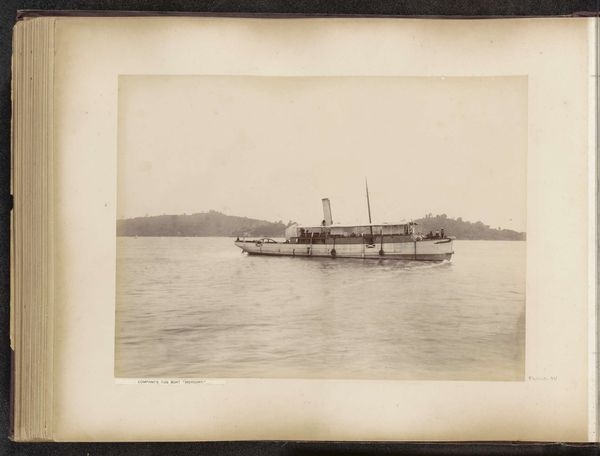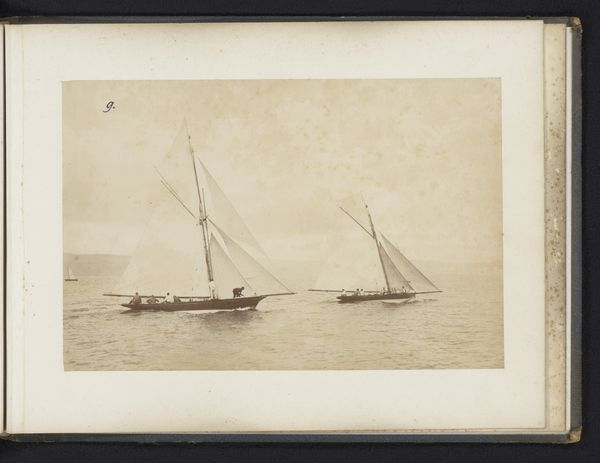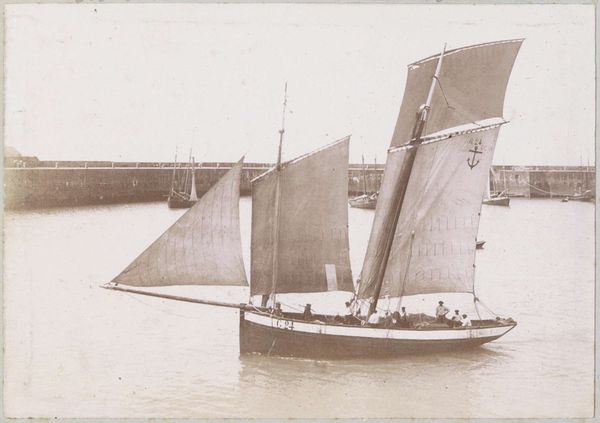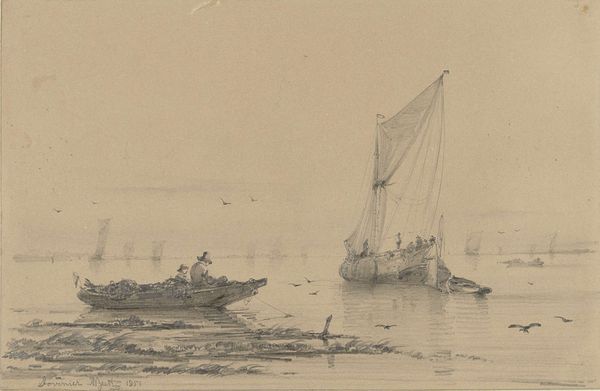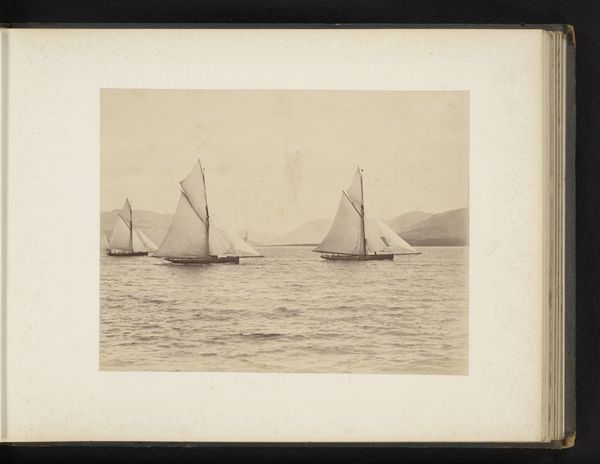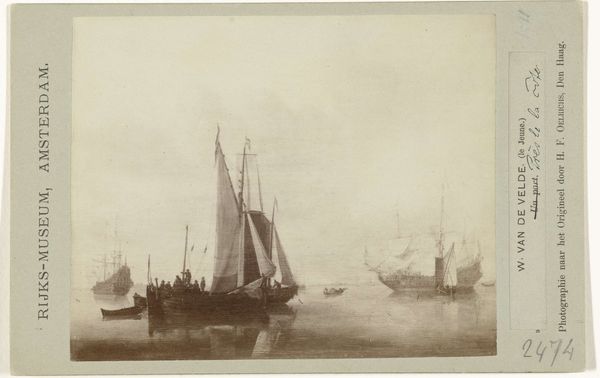
Zeilschip met gehesen zeilen en kano's voor de kust van Nederlands-Indië c. 1920 - 1930
0:00
0:00
photography, gelatin-silver-print
#
still-life-photography
#
landscape
#
photography
#
orientalism
#
gelatin-silver-print
Dimensions: height 71 mm, width 123 mm
Copyright: Rijks Museum: Open Domain
Editor: This photograph, a gelatin-silver print by Klaas Kleiterp, titled "Zeilschip met gehesen zeilen en kano's voor de kust van Nederlands-Indië," and created sometime between 1920 and 1930, has such a serene feel. It really makes you wonder what life was like back then, both for the Europeans and the indigenous people. How do you read the relationship between the materials and the subject matter here? Curator: The appeal of this gelatin-silver print is the ability it provided European photographers like Kleiterp to capture and disseminate images of colonized lands. The mass production of prints created an industry of image making that directly fed into the Orientalist fascination of the time. What labor practices are implicit within that circulation of imagery? Editor: That's a great point. The act of photographing, developing, and printing these images itself represents a form of labor and control. Were these photographs primarily for personal documentation, or was Kleiterp producing them for a broader market? Curator: It's crucial to consider both. He was likely making images for personal documentation and to engage within colonial networks, but there was undoubtedly a consumer market hungry for these depictions. The commercial aspect played a significant role. How does seeing the image as a product of both artistic expression and market demand change your understanding of it? Editor: It certainly makes me think about who profited from these images and how they shaped perceptions of Southeast Asia back in Europe. There is this seemingly innocent moment captured, but that captures something more complex when thinking about its process. Curator: Precisely. Looking closely at the materiality reveals so much about the economic and social dynamics at play. That subtle aesthetic of a sepia-toned gelatin silver print should always be placed in relationship to both its historical value as an object of commerce, its depiction of human and natural capital. Editor: This discussion has highlighted how important it is to think about photography, not just as an art form, but as an artifact tied to labor, consumption, and historical power dynamics. Thanks for helping me shift my perspective!
Comments
No comments
Be the first to comment and join the conversation on the ultimate creative platform.
